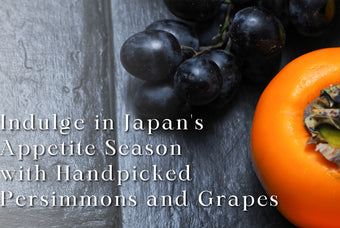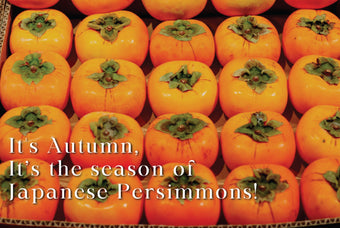[New] Asari and Shijimi, Japanese representative clams
![[New] Asari and Shijimi, Japanese representative clams](http://jx.today/cdn/shop/articles/clams-text.jpg?v=1691375896)
Asari and Shijimi, as the Nutritional Powerhouses of 2 Japanese clams
Asari and shijimi are both well-known shellfish, and shijimi is particularly popular in Japan due to their nutritional value.
Its nutritional richness is so concentrated that they are even made into supplements.
These shellfish are definitely worth incorporating into your diet.
Let us introduce ever-popular clam, Asari and unique clam shijimi!
Distinguishing Shijimi and Asari

As they are both quite similar it is important to note the key differences between the two.
While both shijimi and asari are delicious and filled with umami, shijimi has a defined taste that helps identify the difference between the two.
On the contrary, it is no surprise that asari and shijimi both provide incredible nutritional value for the body which is a welcome similarity in this case.
For food, asari tends to be prominent in a wider range of dishes like sake steamed, on rice, and even clam chowder, whilst shijimi is used in ‘tsukudani’, a savoury side dish where it is simmered.
However, both are suitable substitutes within miso soup, which may possibly be the most common form of dish you can usually find for these clams.
|
|
Asari, Japan's Delicate Native Shellfish Delicacy

Asari can be found in inlets all across Japan and are a seafood delicacy.
Patterns can hugely vary, but ones that are lighter in colour with clearly defined markings are generally fresher and higher in quality.
The flesh is firm, yet plump and succulent, bursting with flavour.
Having been a part of the Japanese diet for thousands of years, there is an abundance of cuisines across the country that employ the prominent taste of asari.
On top of that asari are very nutritional.
They are full of vitamin B12, iron, and calcium that helps boost the immune system.
Brimming with protein density that is higher than most other food it is also low in fat.
How is Japanese Asari special?

Rich and intense umami flavor
Japanese asari have a distinctive flavor profile and rich umami taste which could be attributed to the abundance of nutrients and the high-quality seawater in Japanese coastal areas.
When used in cooking, Japanese asari enhance the broth and create a delicious and flavorful experience.
Minimal shrinkage of meat
Japanese asari have a unique characteristic of minimal meat shrinkage which could be attributed to the clam variety, their natural environment, and the fishing methods employed.
Clams that don't shrink significantly retain their size during cooking, resulting in an appealing appearance and texture in the final dish.
Asari's Enduring Presence in Japanese Cuisine and Traditional Dishes
Believed to have been eaten by the Japanese dating back all the way to the Jomon period thousands of years ago, asari has been a long staple in the food culture.
Asari no Sakamushi

One of these is a traditional dish that you can oftentimes find at an izakaya.
A simple dish where the clams are steamed in a pot with sake, soy sauce and other extra seasonings, it brings the raw taste of asari to fruition without overcomplicating the process.
Fukagawadon

Another example originating from an area called Fukagawa in Tokyo. Birthed in the Edo period where kai was a specialty in this part, it is essentially a combination of steamed asari and miso soup poured onto a bowl of rice.
Miso soup with asari

With its high umami content, it perfectly complements the subtle flavours of the miso soup, where you can even find that it can make great use as dashi.
Shijimi, Japan's Flavorful Freshwater Clam

Shijimi is a freshwater clam that is frequently featured in Japanese cuisine and is used almost interchangeably with the similar shellfish ‘asari’.
It can be found in all stretches of the country from ‘Lake Ogawara’ and ‘Lake Jusanko’ in Aomori, to ‘Lake Shinjiko’ in Shimane Prefecture that interestingly is the highest producer of shijimi in Japan.
All these examples have a slight sodium level in the water that makes it the suitable environment for shijimi to thrive.
The Mighty Shellfish Fueling Flavours and Wellness

A formidable food, shijimi is highly nutritional. Brimming with vitamins A and B12, along with amino acids that are beneficial to the immune system, it also contains one called ‘acorbine’ that helps protect the liver.
Together with strong levels of ‘ornithine’, shijimi is a ‘power’ food of sorts where these substances provide excellent support in detoxifying the liver, essentially curing hangovers and fatigue.
With a saturated amount of succinic acid that provides the umami in shijimi, freezing it before having it be prepared allows for the umami to strengthen and permeate the meat.

Among various ways to enjoy shijimi, miso soup with shikimi is the most recommended and the quick way to enjoy the deliciousness as well as the nutrition of shijimi to the fullest.


![[Restock] Negitoro and Award-winning Soy Sauce](http://jx.today/cdn/shop/articles/negitoro-mb_340x228_crop_center.jpg?v=1696387775)


![[New] Oyaki - Mountain Veggie Dough Delights from Nagano Prefecture](http://jx.today/cdn/shop/articles/oyaki-text_340x228_crop_center.jpg?v=1695757170)



